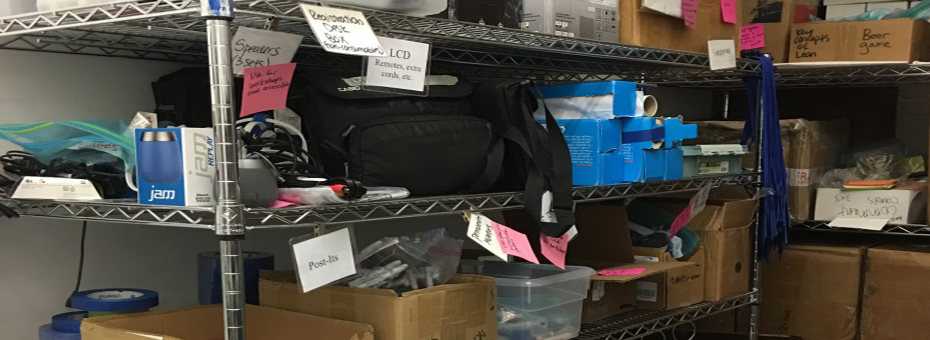We try to practice what we preach at LEI, but like at any workplace, the clutter builds up over time and starts to disrupt the workflow. That was what led a group of us employees to stay late on a Friday night and empty out, clean and reorganize our storage room. It took a while, but eventually the scene went from this…
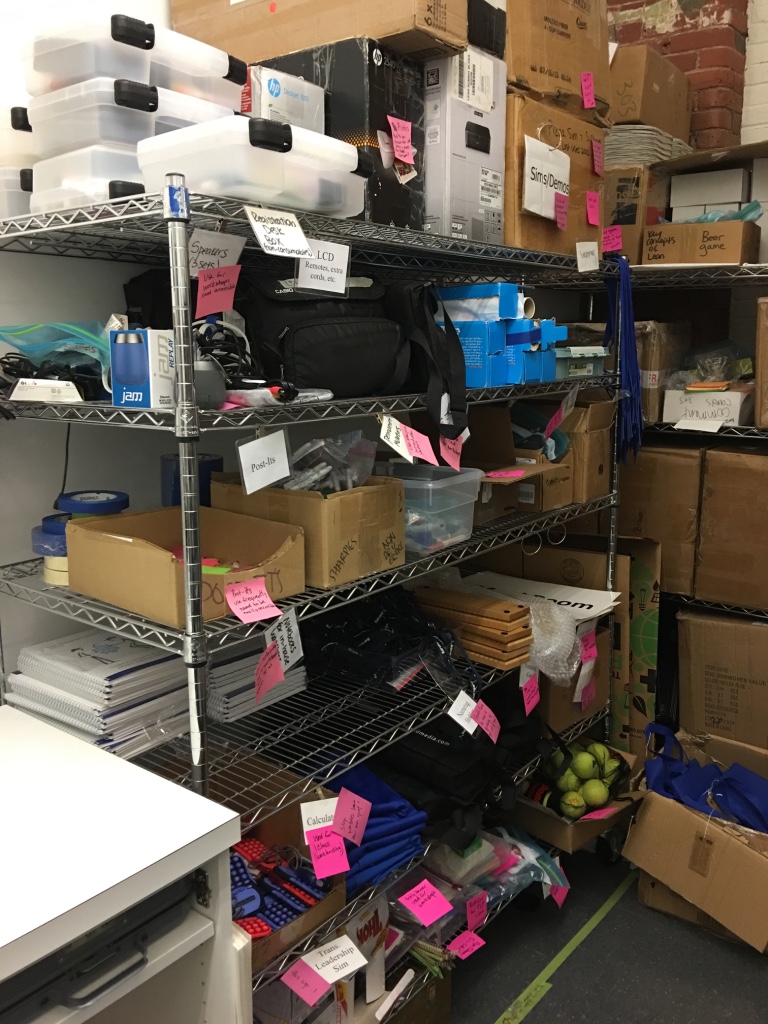
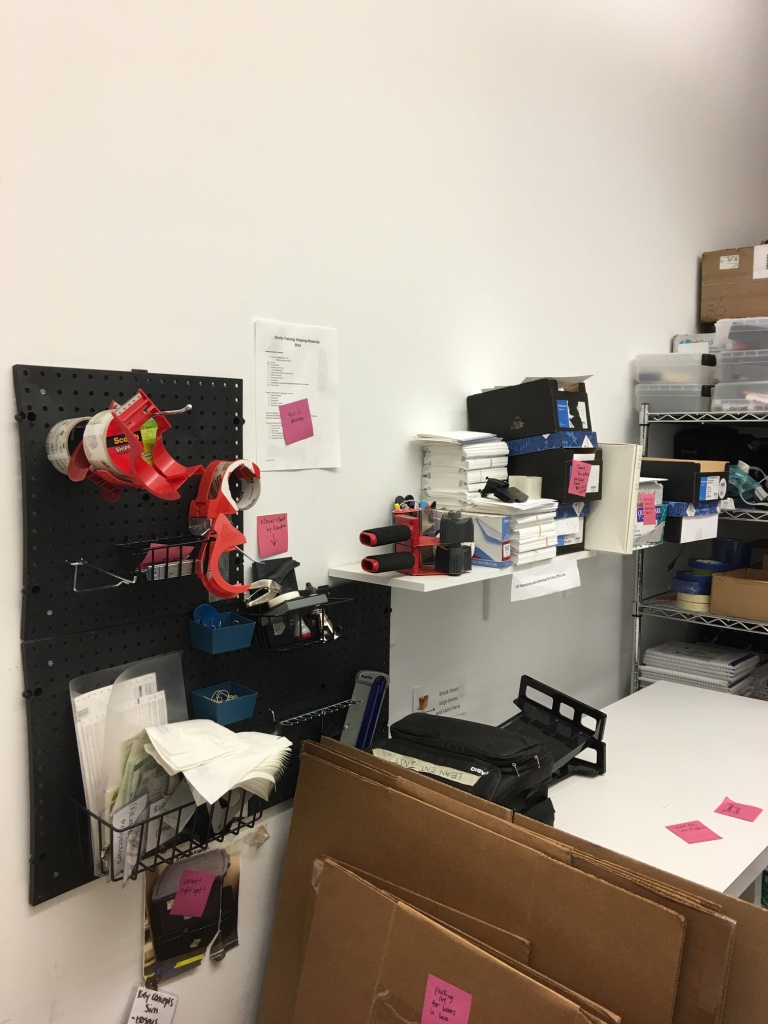
…to this.
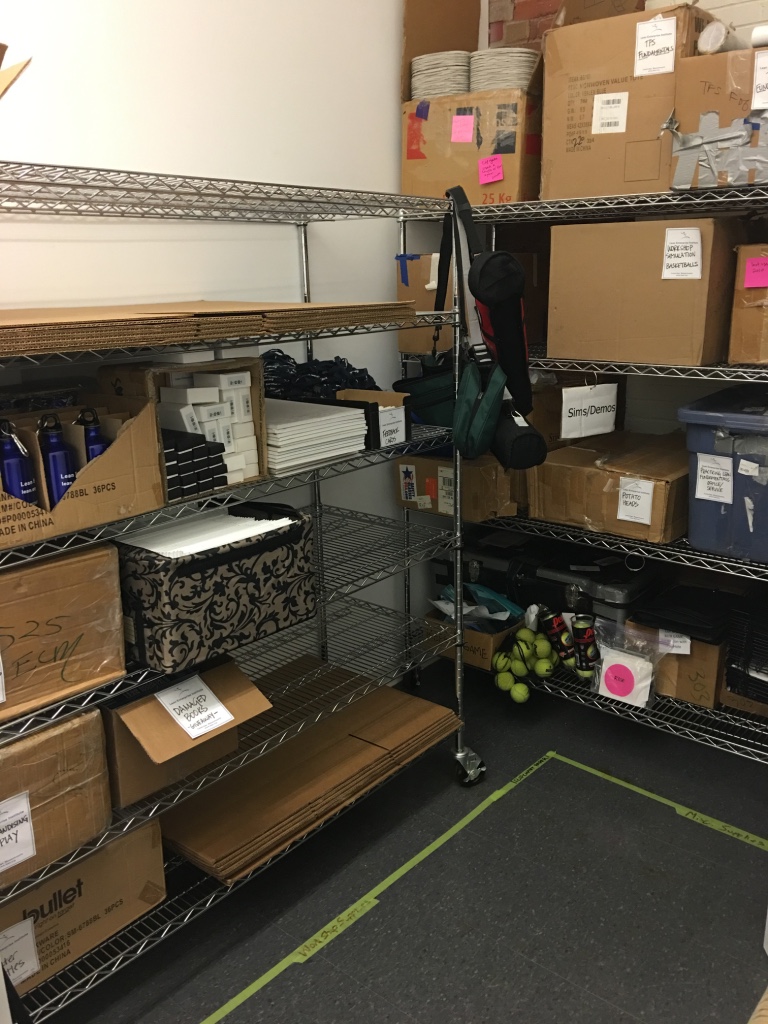
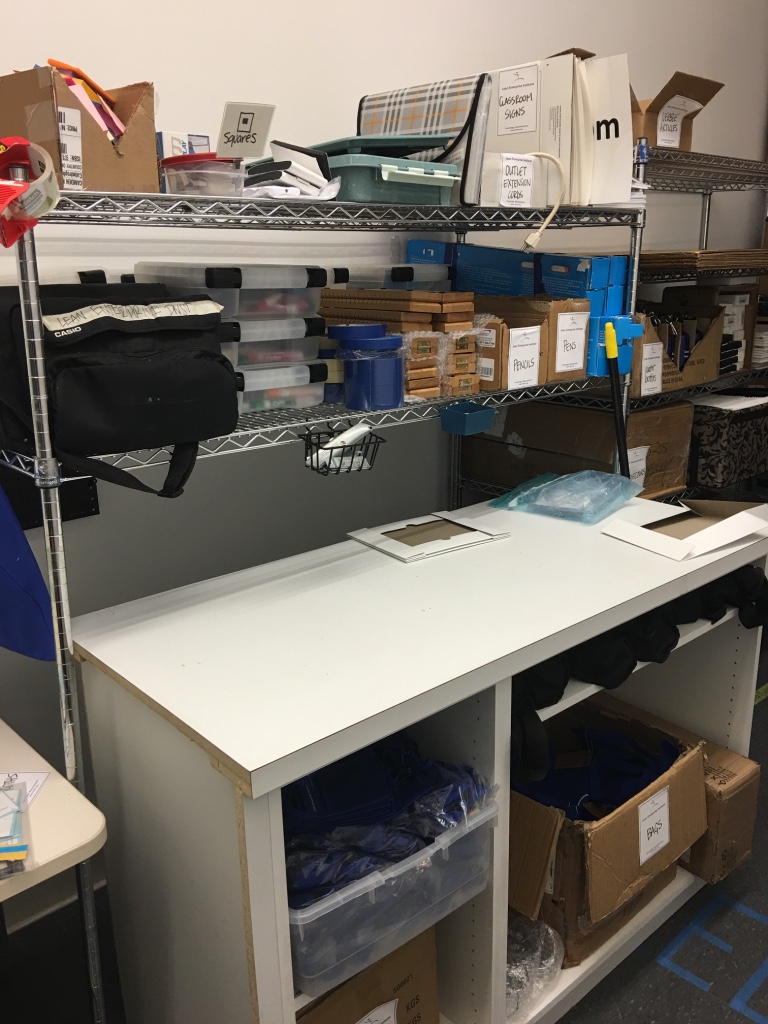
One of my favorite improvements we made was the new placement of our shipping supplies. Previously our envelopes, tape, boxes and postage machine were scattered in several different places all around the room.
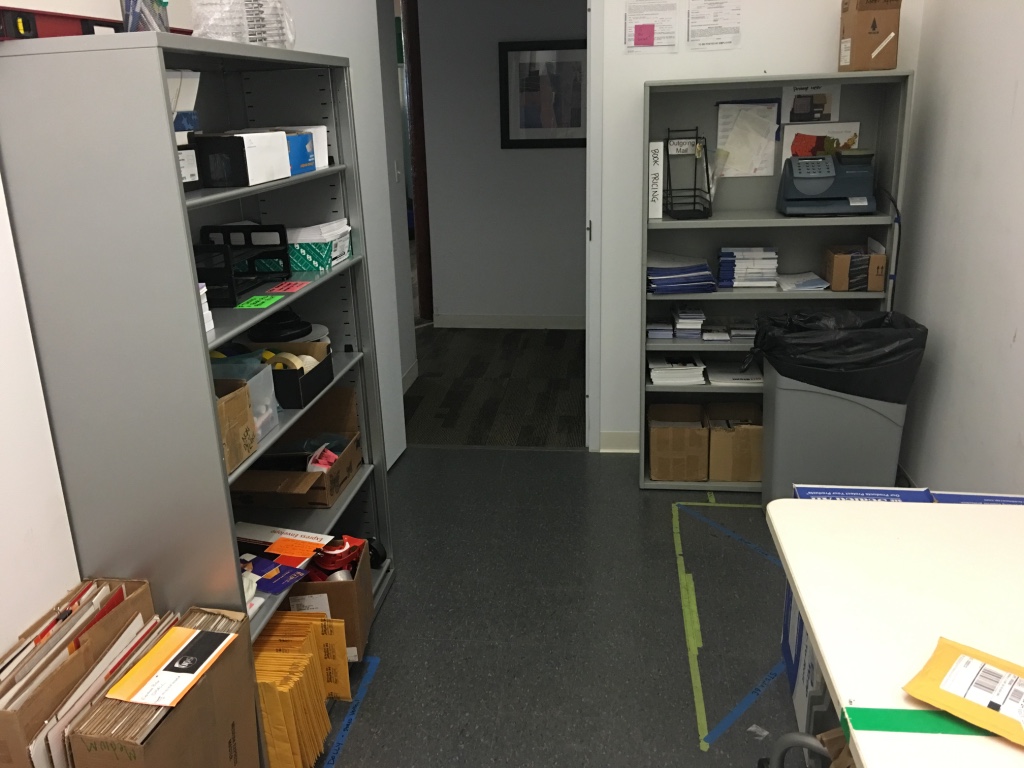
It took many steps and a whole lot of time to get together everything we needed to send even the simplest package. Now we’ve turned it into what people are starting to call “the Mail Corner” – a work cell with everything needed to send a parcel arranged logically in one corner of the room.
This new layout conforms with one of the original principles of the Toyota Production System – eliminating waste of movement. Although it first came into being to help assembly line workers build cars, there’s no reason why it can’t be used in knowledge work. This is one of our most-asked questions here at LEI, and our answer is always the same – regardless of what they were originally designed for, TPS practices have a huge impact in knowledge work too.
There are countless aspects of TPS that can be applied to knowledge work, but let’s focus on just one for now – the elimination of waste.
On the manufacturing floor, some waste is easy to see; like say, walking away from the assembly line to retrieve a part and then walking back to attach it. Feet in motion carry the entire body away from the work. Some waste is harder to see, like bending down to drive a screw. The feet remain stationary yet unnecessary – and more importantly, uncomfortable – motion moves the body to reach the work.
Then you have waste that is very hard to see – maybe fumbling for a small part such as a screw. The feet and joints are calm, while the hand struggles to position the part in the correct orientation to start the work. Finally, there’s also waste that is impossible to see, like picking parts while recalling their numbers 45BLK, 6734B, and 89NB2. Memory and recall are required simply to start the work.
While your job may not require assembling parts, these principles of eliminating waste can still help you in your day-to-day tasks in knowledge work. In fact, I’m willing to bet you can find similar types of waste in your office/desk/cubicle right now. One of TPS’s key remedies to creating the most value added work with effectively using both of your hands. On the manufacturing floor this might involve a worker putting a part in place with his left hand while another simultaneously reaches for the next piece with his right hand. In the office, it involves something similar – making sure that both of your hands are performing work at the same time.
By TPS principles, effectively using both hands requires three areas of focus:
- Location – The objects you use most should be within easy reach so you don’t have to stretch. For example, do you have to stretch your arm to reach your inbox on the other side of your desk, or a book on a high shelf? How many times per day? How much time is wasted fumbling in your drawers for that elusive highlighter, or The Amazing Vanishing Stapler? Or as mentioned above, do you frequently have to leave your desk and walk to get something?
- Orientation – The objects need to be positioned correctly so again, minimal stretching, reaching, and moving is needed. How many times have you twisted your wrist to pick up that reference book you keep lying on your desk cover-down? Ever gone home with a sore wrist and wondered what it was from?
- Stability – The object should be stable, and not moving around on you or you’ll be losing the use of one of your hands to hold it in place. I have a habit of balancing books in my lap with one hand and typing notes from the book with the other. How much time do you think I’d save if I made a simple, makeshift book stand on my desk – suddenly allowing me to type with TWO hands?
We’ve truly just scratched the surface with using TPS principles in knowledge work. It all speaks to the versatility and universal benefits of lean.
What TPS practices do you use in your office environment?
—
For more information on TPS principles and how to use them to identify and eliminate waste in the workplace, register for Jeff Smith’s presummit workshop, The Thinking Production System: Fundamentals of Work, at the 2016 Lean Transformation Summit this March. Attendees of this workshop will participate in several hands-on simulations to practice the principles they learn to ensure knowledge retention through real-world application. Learn more on the Summit webpage.
